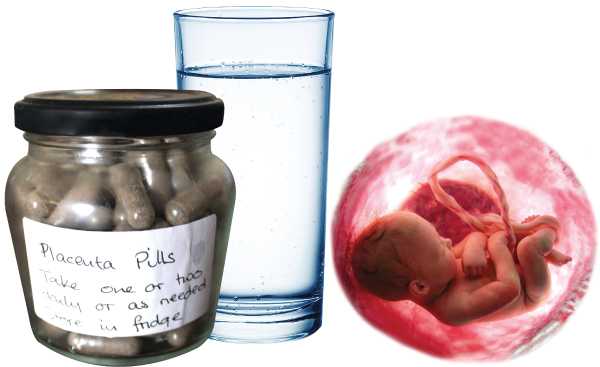PLACENTA EATING… Based on facts or just a fad?

In the developed parts of the world, there are a growing number of women who consume their children’s placenta soon after birth. These women swear by the benefits that come with eating the placenta with entrepreneurs making a kill by offering various ways to make it more palatable. Some celebrities have also endorsed it, hence raising the question: Is it a fact or a passing fad? Find out here…
Reality star Kim Kardashian, as is wont to do from time to time, set social media’s tongues wagging when she announced that she would consume her placenta after the birth of her second-born child, Saint West. She was following in the footsteps of other celebrities such as her sister Kourtney Kardashian, January Jones and Coleen Rooney all of whom admitted to having done so.
However, this is where medical experts draw the line as far as placentophagy or placenta eating is concerned – it is just a fad, they categorically say. There is no scientific proof that eating a placenta has any benefit to the human body once the afterbirth is expelled. Research by Northwestern University in the US showed there was no human or animal evidence to show the practice could help alleviate problems such as postnatal depression or post-delivery pain, as proponents of the practice claim.
The popularity of placentophagy stems from nature itself. It is common knowledge that animals eat their own placenta once they give birth. Experts argue that this is more of a housekeeping move – a bid to clean up any evidence of a weakling among the pack in case any scavenger or predator chances by. While it is common knowledge in medical circles that the placenta is rich in proteins, iron, vitamins, progesterone and oestrogen hormones, researchers say there is no evidence to show that these nutritional values are transferrable to humans upon consumption.
In fact, they warn against consumption of the same saying the placenta can be filled with bacteria not to mention other wastes such as meconium (foetal feaces). However, proponents of placentophagy argue that some cultures such as the Chinese consumed the placenta albeit in small doses in powder form within a host of other ingredients such as herbs and spices as part of a larger tincture. They further argue that the fact other mammals eat their own placenta (with the exception of whales and dolphins), is a sure indicator that it has nutritional benefits.
Those who have taken the controversial move swear by it, stating that it has been instrumental in reducing anxiety, increasing energy levels, reducing post-pregnancy pain (case studies however showed progress only in rats), weight loss and the most controversial move of all, alleviation of postpartum depression. Others claim it increased their breast milk supply.
There are, however, women who claim that they have experienced adverse effects as a result of placentophagy including feelings of sadness, depression, jitteriness, tension and surprisingly, excessive production of breast milk.
Proof or lack thereof of the human benefits of placentophagy has not stopped people from cashing in on the practice. In the UK alone, as of 2016, getting ones’ placenta turned into capsules (other people prefer to cook it while others turn them into smoothies or even pizza toppings) can cost up to 200 pounds (Ksh 28,000). The manufacture of the luxury food is also unregulated in many major markets leaving it open to quacks.
Experts dismiss the relief–inducing effects of placentophagy to a placebo or psychological effect, meaning if someone eats the placenta believing it will bring about the desired results, then often times, the body has no choice but to respond in the same way. Their advice is cautionary; stick to proven methods of best practices when it comes to pregnancy and birth.
To comment on this and other articles go to: facebook:ParentsMagazine/
www.parentsafrica.com/
twitter:@parentsafrica
May 2016




